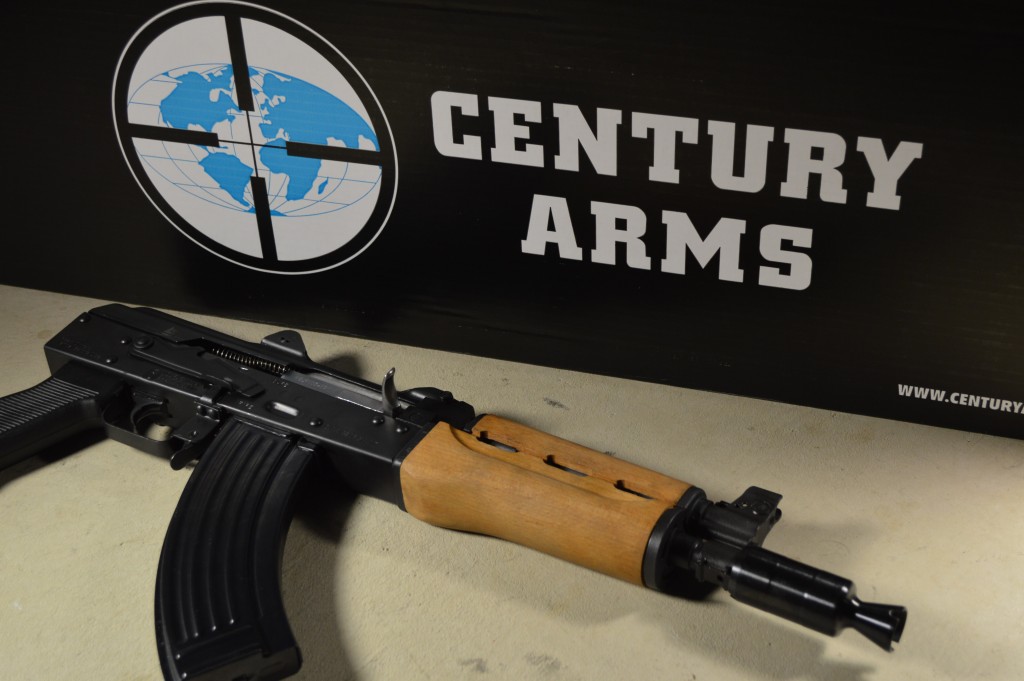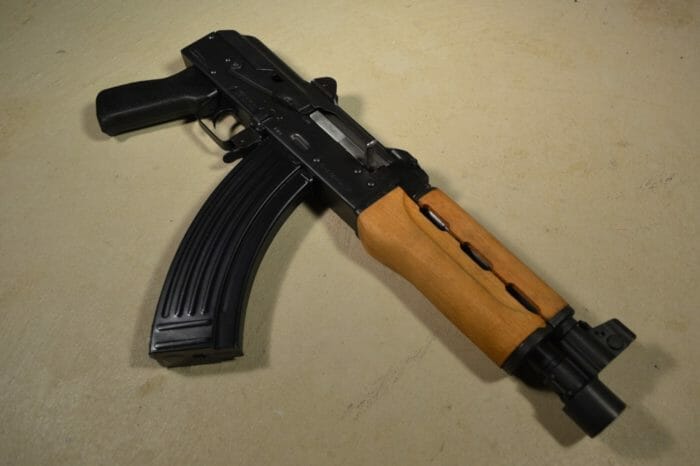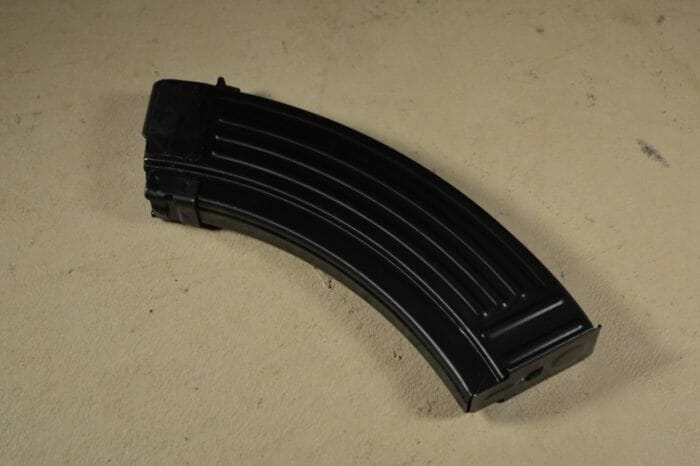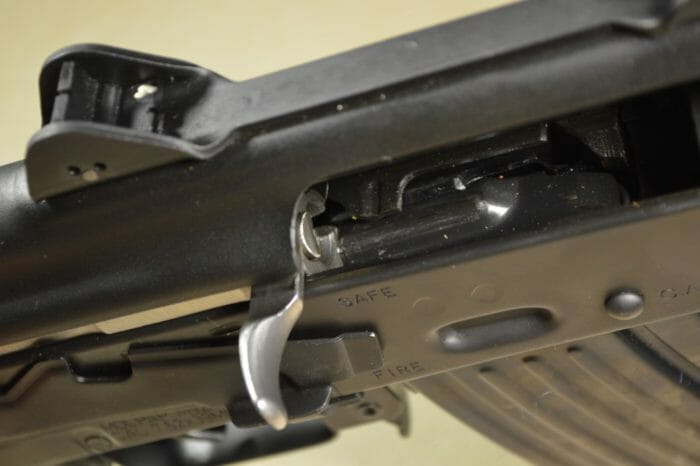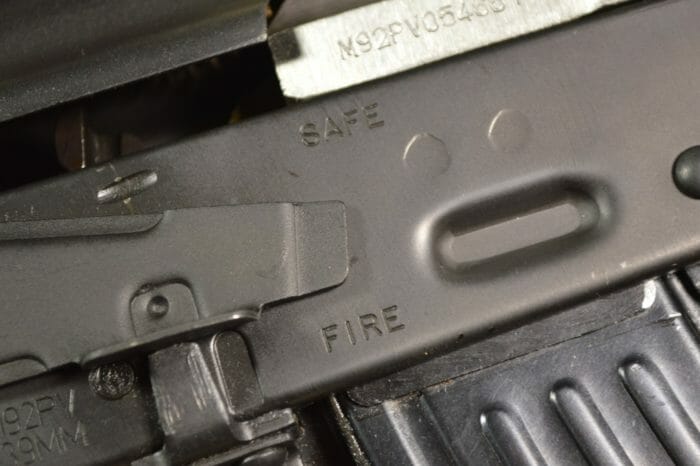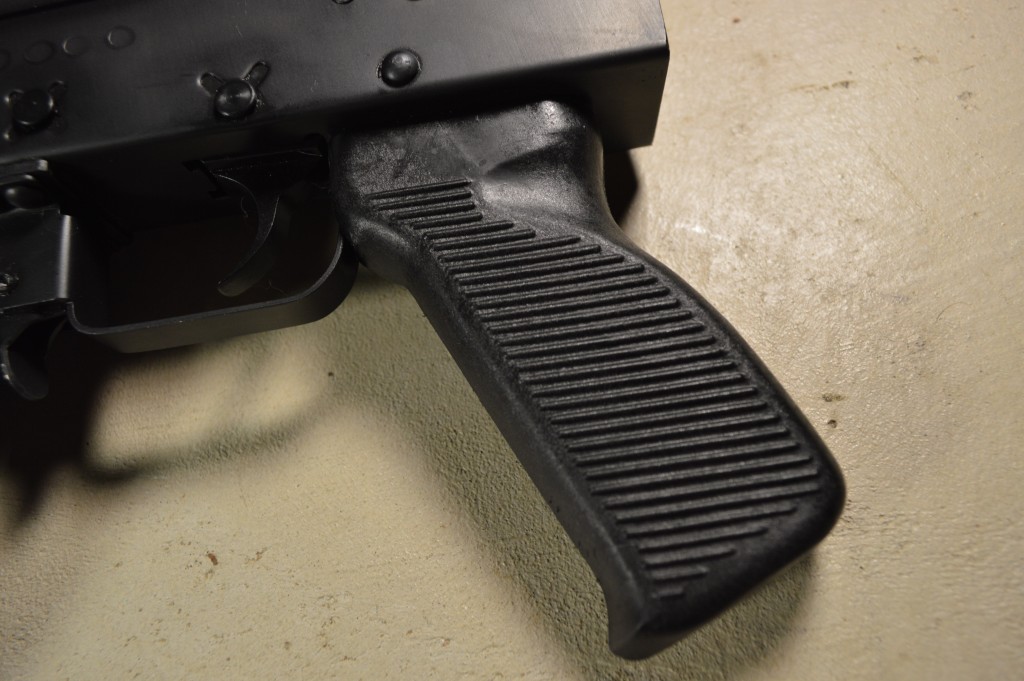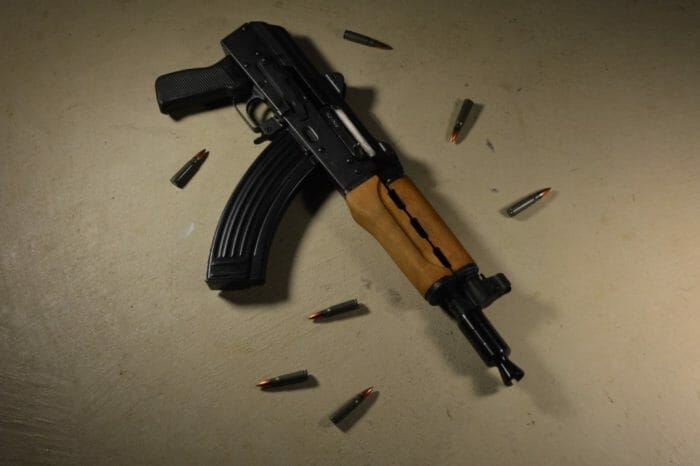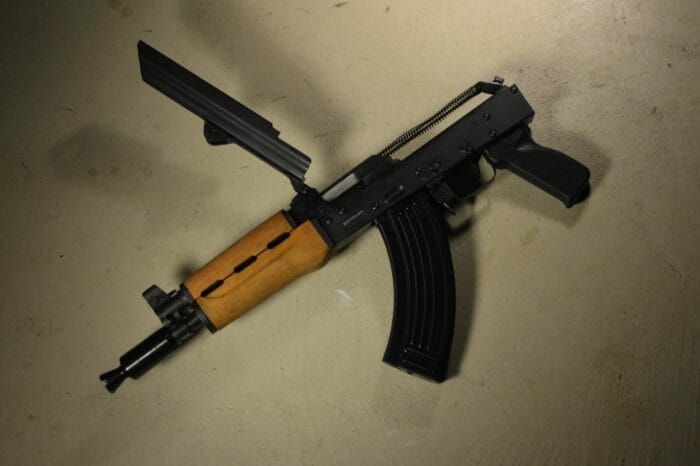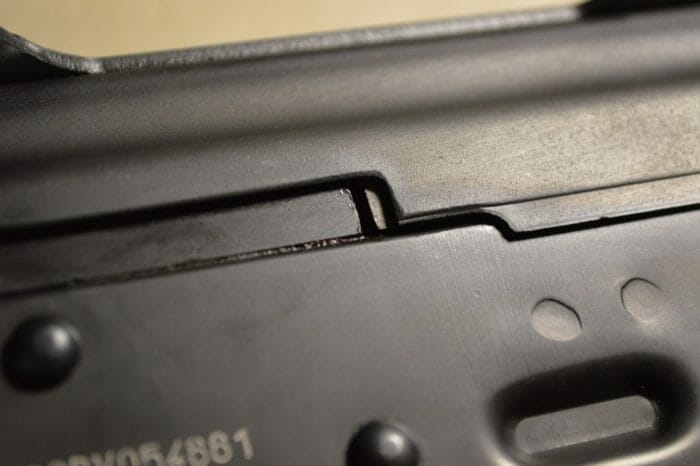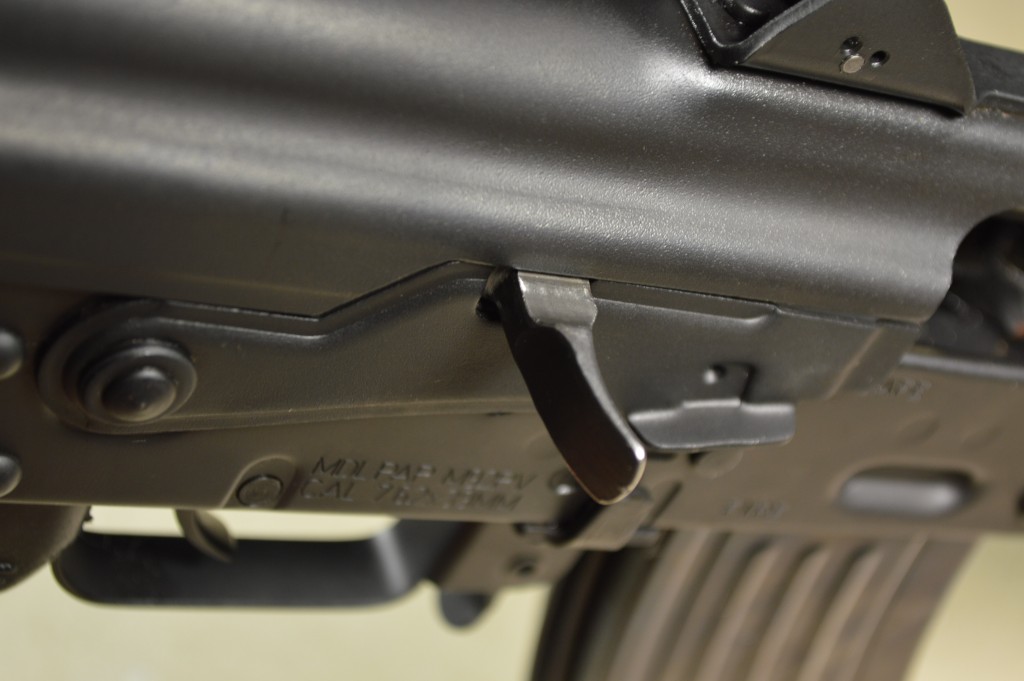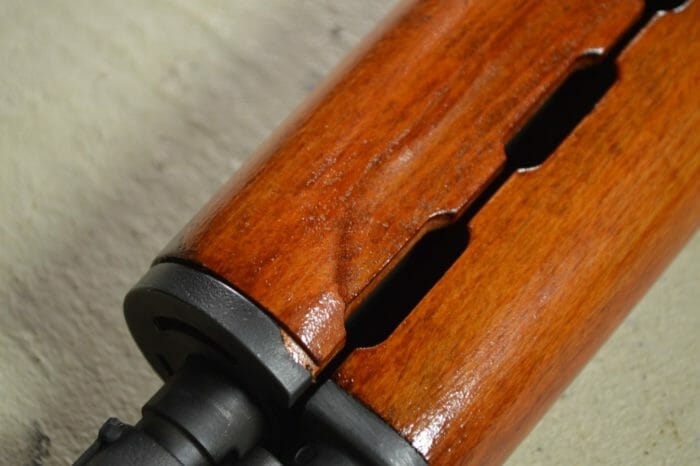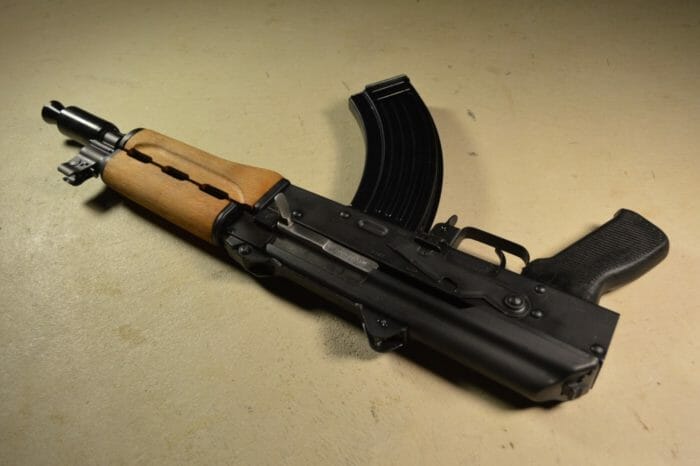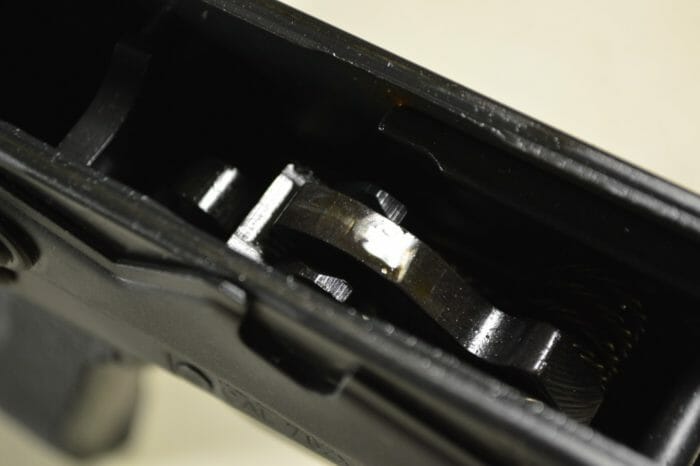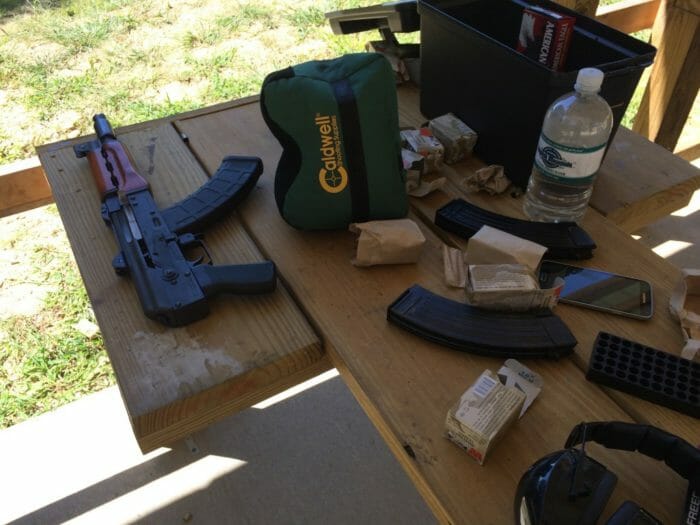Century Arms Zastava PAP M92 PV Review
If there is one admission I need to make it is that I’ve always had a sweet spot for Eastern Bloc rifles and pistols. In fact, if I were forced to rank my favorite firearms, the list would probably be topped by the Dragunov SVD, but in short order we would come to the AKS-74U. I cannot with any certainty say why I like stubby AKs like the “Krinkov” (as we call it here in the US), but for some reason they just seem so incredibly handy that I’ve always wanted to own one. Unfortunately, true AKS-74U builds typically fetch over $1,500 on today’s market and more reasonably priced Arsenal SLR 104-URs are drying up at an incredible rate, with no new imports in sight.
Though things look grim for “Krink” fans, Century Arms has stepped up and is currently importing Serbia’s answer to the AKS-74U, the M92, in pistol format at a very reasonable price. While in no way a proper ’74U, the M92 actually offers some advantages over the traditional Krink that may appeal to folks who already own the 5.45 ’74U. At this time, Blaine and company at Atlantic Firearms are selling this intriguing pistol for just $439.
About the Pistol
The PAP M92 PV as imported by Century Arms is a pistol format version of Zastava of Serbia’s ultra-compact M92 “Krinkov” style AK, originally developed in 1992. Built as a sort of cross between an AKMS and an AKS-74U, the military M92 retains the AKMS’s underfolding stock and incorporates a slightly lengthened AKS-74U style front end. Like the Zastava M70 series, the M92 is chambered in the legendary 7.62x39mm. Since its inception, the M92 has seen action with Serbian forces, but has also been issued by Middle Eastern militaries, such as Iraq.
Magazines
The M92 as sold by Atlantic Firearms ships with two magazines, only one of which is Serbian/Yugo bolt-hold-open (BHO) style. The Serbian magazines are phenomenal; they feed smoothly and the BHO follower halts the bolt carrier group when empty. Unlike an AR-15 bolt stop, the bolt carrier will slam forward once the magazine is removed, but the hold open feature does help to make it more obvious that it is time to reload. Like any steel AK magazine, the Serbian one is fairly heavy and the difference between it and a polymer one is quite noticeable, especially on a small gun such as the M92. Surprisingly, the Serbian magazine has the most wobble when inserted than any other magazine I have tried, but it is not enough movement to be an issue.
The second magazine in the package was of the Magpul MOE variety. Magpul’s product feeds reliably, locks in tightly, and is very lightweight. Unfortunately, the current generation MOE magazines do not feature any steel reinforcement around the locking lugs or feed lips, leaving them vulnerable to damage with hard use. Even so, they make great range magazines and I have had no issues with the few I own.
Aside from the Serbian and Magpul examples, I have also tested Russian steel, Egyptian steel, and Bulgarian commercial polymer magazines in the pistol. All fit and feed very well, but unsurprisingly the polymer options lock up noticeably tighter than any of the steel magazines. I still need to bring in a Russian Bakelite magazine to complete my testing.
Sights
When I first began to consider the M92, I found that many people consider the Krinkov-style flip sights superior to the standard AK rear leaf. To me, these assertions were interesting because both are notch-and-post systems that are more similar than they are different. Having used the PAP for a while, I’ve concluded that the two truly are functionally identical and any advantages offered by the M92 system are marginal at best. As I indicated, both styles use a rear notch sight and front post, but the M92 version’s rear aperture flips between 200 and 400 meter settings exclusively. If the M92’s sights are better, it is because they are a bit quicker to use and acquire than the traditional style, perhaps as a result of the shorter sight radius.
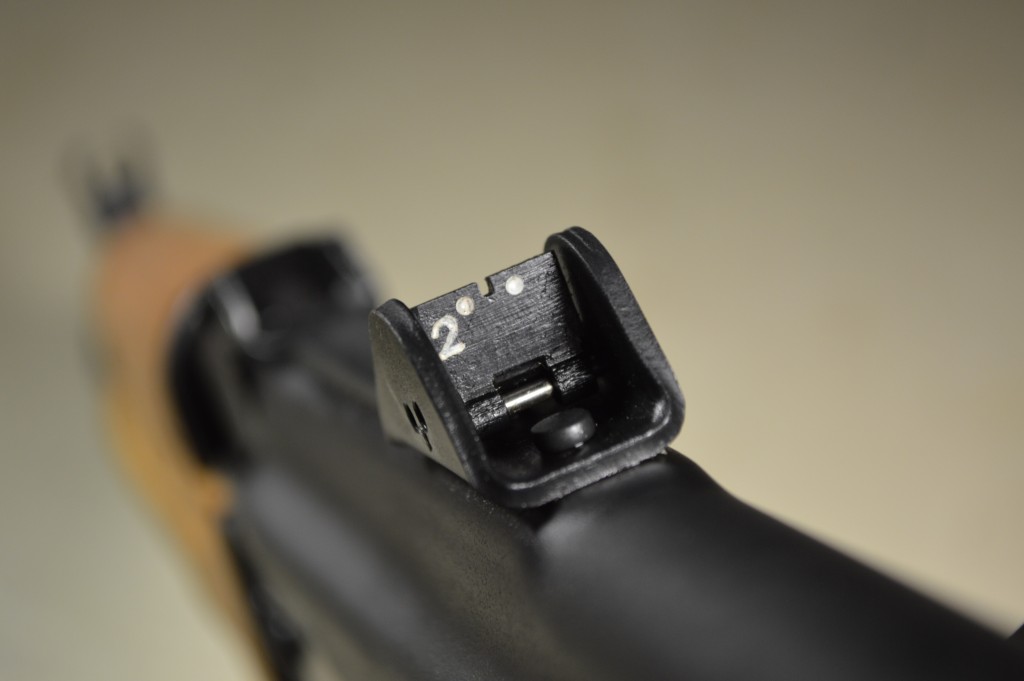
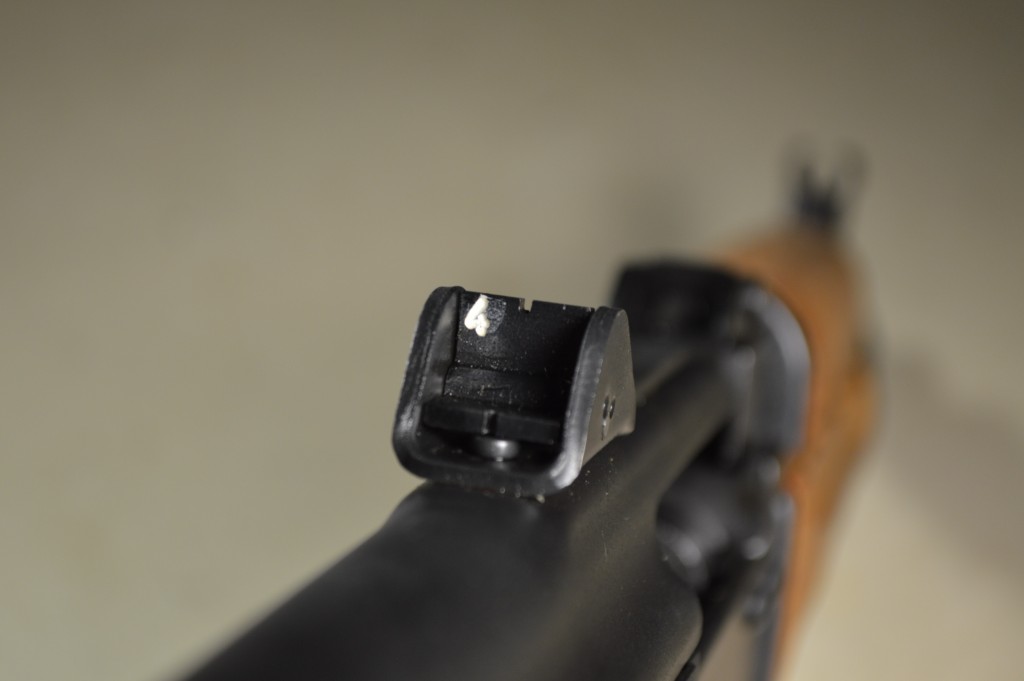
Uniquely, the M92 features built-in low light sights with painted white dots for aiming. At the front block, the dot sight is deployed by flipping up the small plate just behind the post. Oddly, my example is missing the white paint on the front sight. The two rear low light dots are incorporated with the 200 meter aperture. Since some have asked, this aperture can still be used with the standard front post without issue. With the low light sights deployed, shooters sacrifice precision in favor of a sight picture which closely resembles that of many popular handguns. Sadly, the sights do not glow in the dark, so they are not true night sights as some people might think.


Finish
All of the M92’s metal parts, save the bolt carrier group and piston, are hot blued with a matte, medium gray finish. Typically, bluing is valued for its superior beauty and wear resistance as compared to painted or phosphate finishes. At its heart, bluing is a controlled oxidation process that alters the color of the steel, but does not compromise the integrity of the part. The finish is well done on the M92, but I do not love it for this application. Having seen several military surplus guns with similar finishes, I know that bluing does not prevent rusting and pitting as well as more utilitarian treatments like phosphating, nitriding, and/or painting. Even so, the finish looks excellent on this Serbian blaster and keeping the gun well oiled will go a long way in protecting the components.
Furniture
The M92 sports a relatively uninspiring set of unfinished birch or beech wood handguards. Cut in a modified “Krinkov” style, these guards are not only longer than similar AKS-74U forearms, but they also are not compatible with parts from other Zastava offerings. As far as comfort is concerned, these handguards are some of the best in the AK world. The beefy, bulged lower half fills hands much better than standard AK forearms and the extra length over ‘74U guards offers much appreciated additional real estate. If the standard hardwood is not your thing, railed, polymer, and laminate/exotic wood handguards are available for the M92.

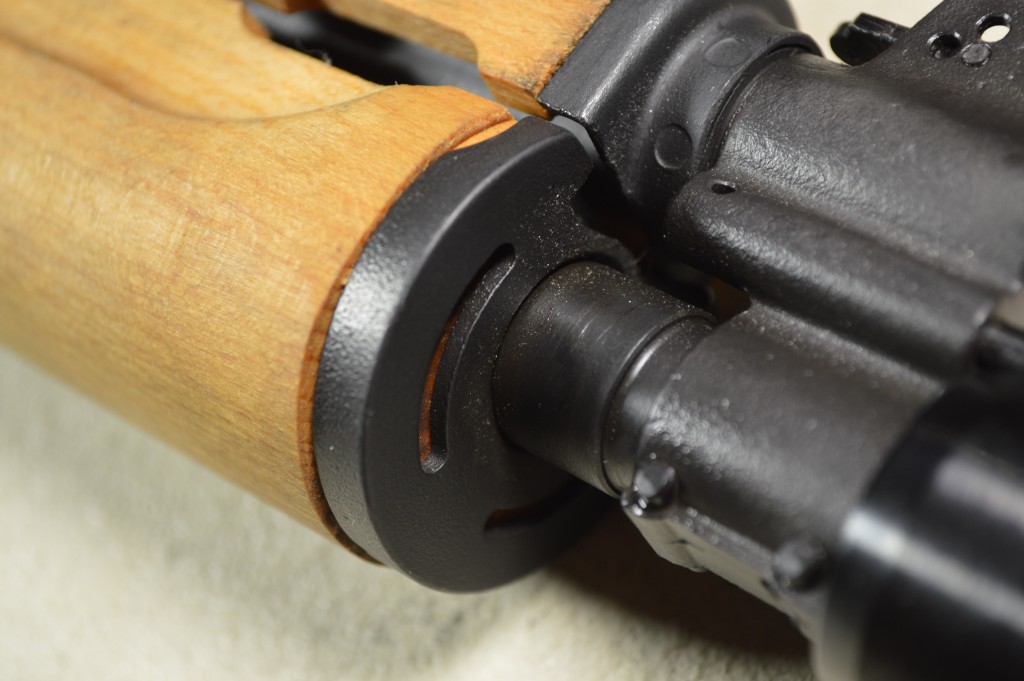
The M92’s contoured polymer pistol grip is unique to Zastava guns. Because it has a thumb groove on its left side, the grip also happens to be one of the most comfortable standard options for right-handed shooters. For our southpaws, the grip is only mediocre as the thumb slot is not replicated on the right side. I plan to replace the pistol grip with a Bakelite or plum one, but I will also need to obtain a different grip screw as the standard one has a larger head than the screw used by other nations and is not compatible with non-Serbian grips.
Build Quality
Because I still have a bit more testing to do, I will not pass a final judgment on the M92’s overall construction. Even so, I can say with reasonable confidence that the pistol is well built and I have no real concerns about its longevity. Recent feedback from AK Operators Union has certainly fueled concerns about Zastava rifles, but my current belief is that most of these Serbian-made rifles will serve their owners very well.
The rivet work on the M92 appears to be properly done with no loose or over-crushed rivets to be found. Likewise, the sights on my example have no discernable cant. I know some folks have not been so lucky in terms of sight alignment, so keep in mind that there are some M92 PAPs out there that do have canted sights. This is not necessarily unusual for AKs and with the M92 severely canted sights are the exception, not the norm.
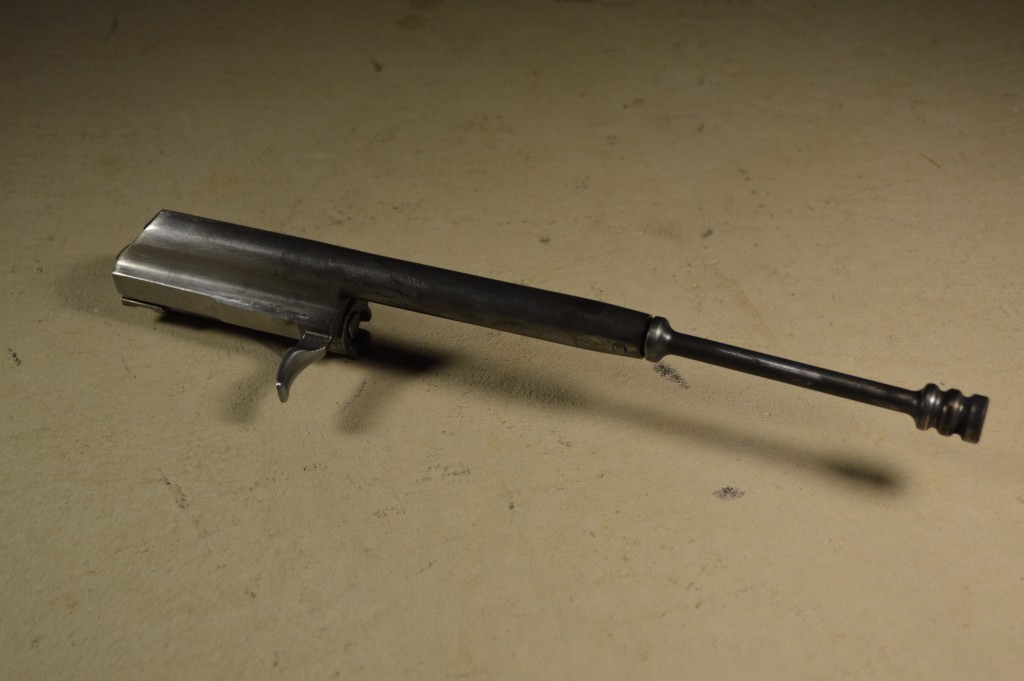

The hinged dust cover locks down tightly with absolutely no play. This is critical because the rear sight is mounted on this cover and any movement would inevitably throw off the rifle’s point of aim. Though the dust cover fits well, I do think it is interesting that there is a small gap between the left front of the part and the front trunnion. This seems to be present on every example I have seen and us apparently part of the M92’s design.
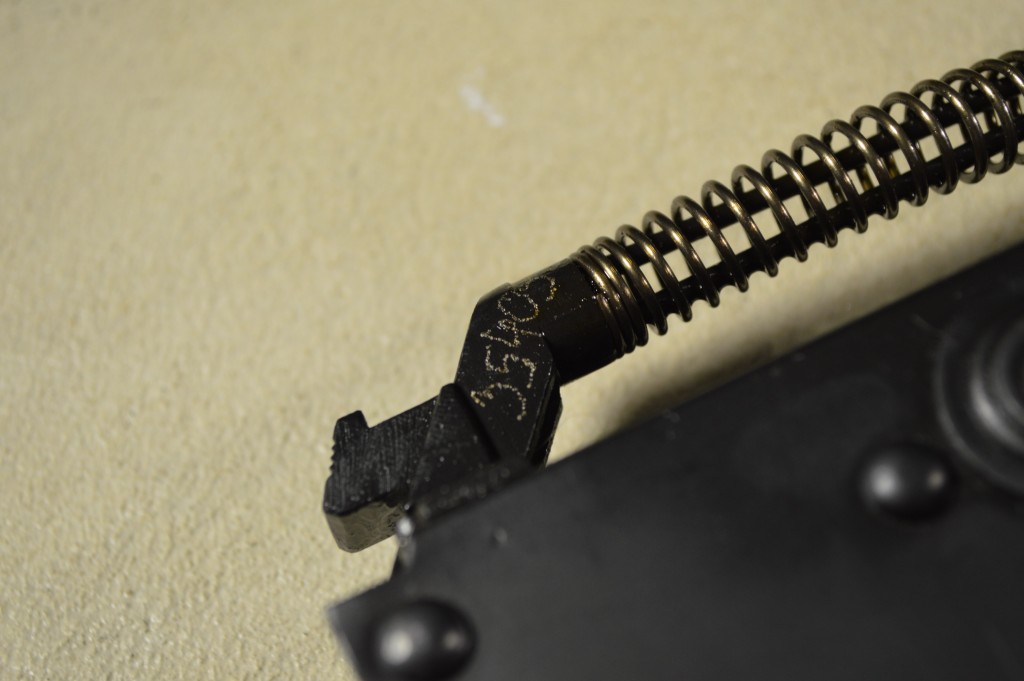
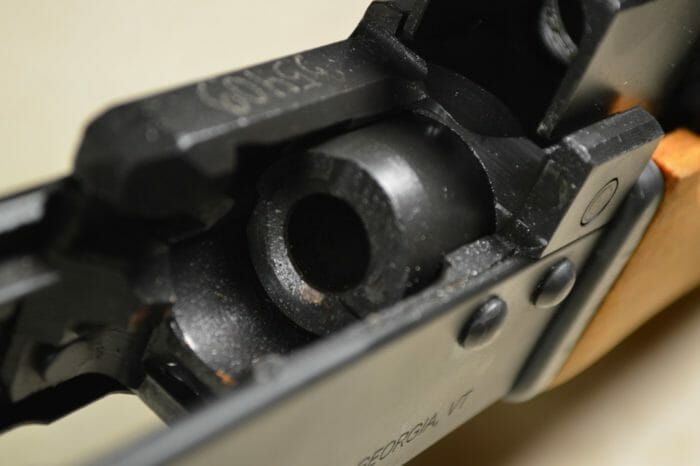
One relatively minor drawback of the M92 is Zastava’s use of a non-chrome lined barrel. Apparently, resource restrictions have always limited Serbia’s ability to use chrome in their barrels. Because of this, only Zastava’s 5.56mm guns that are intended for export come with chrome lining. If M92 owners plan to shoot corrosive Yugo M67 ball through their PAPs, through cleaning will be necessary after each range trip. I am not a fan of corrosive 7.62×39 given that there are so many non-corrosive options and I probably won’t use M67 with this pistol. Time will tell if the lack of lining has any noticeable effect on the M92’s longevity, but chances are good that I will never put enough rounds through it to notice a difference. 7.62x39mm does not produce the pressure levels that are generated by faster rounds like 5.56x45mm, which translates to longer barrel life. As a positive, the bare steel bore might actually promote greater accuracy than a lined part.
Like the AKS-74U, the M92 has a threaded combination gas block/front sight. Out of the box, these threads are concealed by a muzzle nut that has been welded to the front sight. With minimal effort and a dremel, the weld can be broken and the nut removed to reveal the threads underneath. Though the part is similar to its Soviet counterpart, the PAP’s threads are M26x1.5 LH rather than M24x1.5 RH. The Krink style booster as seen in my photos is an original Zastava part and is sold separately for $20-30.
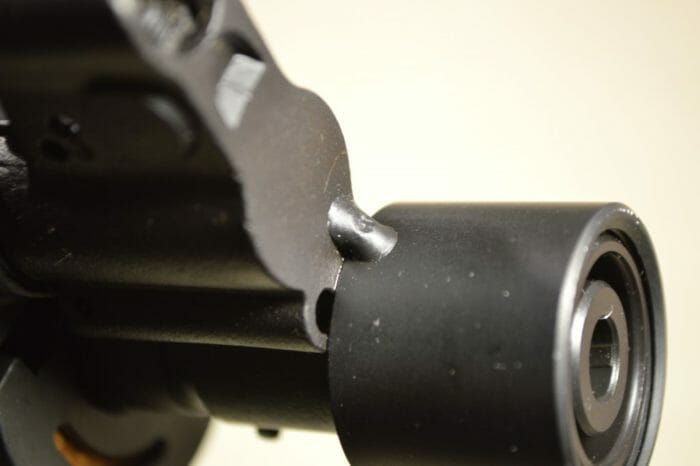
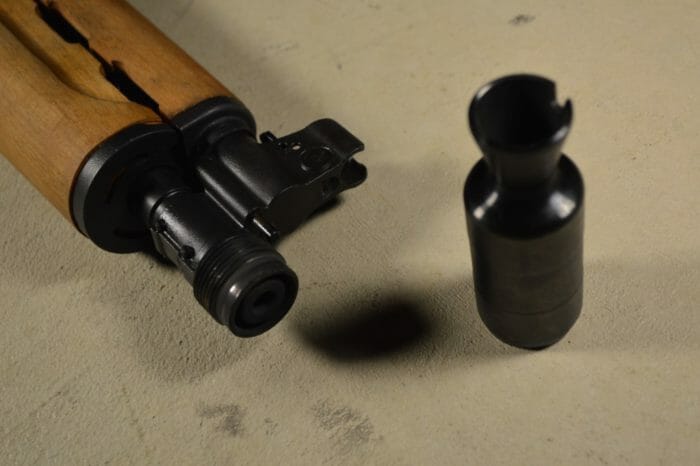
Range Report
So far, I’ve fired just over 300 trouble free rounds through the M92. In my limited time with the pistol, I have been very impressed with its accuracy. Rested on sandbags, I have been able to achieve groupings comparable to the sort I would expect from a basic AR-15. Next to other AKs, the rigid, short barrel of the PAP seems to offer noticeably better accuracy and consistency. If most AKs are 3-4 MOA guns, it is safe to say that the M92 should be capable of 2-3 MOA groupings. I was impressed that I could achieve consistent hits on a 6” steel gong from 100 yards away with minimal effort. I only wish I could install a stock on this pistol without a $200 tax stamp.
Speaking of stocks, I have found that this pistol really could use one. The stout recoil of 120+ grain 7.62x39mm slugs makes follow up shots almost impossible with the M92. Some people find pistol versions of rifles handy as backpack or truck guns and I suppose if local laws necessitate these use cases it might be true; but I cannot board the bandwagon. A sling certainly helps to add some tension or stability to an otherwise unsupported stance, however it won’t help with muzzle control. Alternatively, a SIG style brace can be added to the M92 in lieu of a stock, but the ATF has been noncommittal when it comes to the legality of shouldering such an accessory. Readers should not take this feedback to mean that I do not appreciate pistols like the M92 as SBR bases; they are excellent in such a role. As such, expect to see this PAP sporting a stamp and a stock in relatively short order.
I’ve talked about the accuracy of the short barrel, but the impressive fireballs it facilitates should not go unmentioned. With an intermediate cartridge like 7.62x39mm, 10 inches of barrel is insufficient for complete powder combustion (though this cartridge gives up little energy in a short barrel). Because of this, some of the powder completes its burn after exiting the muzzle. From a shooter’s perspective, the resulting fireball can often be easy to miss, but bystanders are sure to notice. During my initial outing, I noticed a few other shooters watching as this Serbian dragon breathed fire with each round.
Because the gas block is so close to the handguards, I really cannot overemphasize just how hot the front portion of the forearm can get during use. Even a moderate rate of fire (one round every second or two) will heat the wood to a point where it is no longer comfortable to grasp. Furthermore, if you’ve applied a shellac finish as I have, the coating is practically guaranteed to bubble slightly at the front end of the rifle. Luckily, the wood is a poor conductor and the middle portion of the handguard usually stays well within the acceptable temperature range.
Outside of the stock (or lack thereof), another limiter to the M92’s practical accuracy is its mediocre trigger. Because the PAP is imported as a pistol, it is not subject to 922(r) restrictions and no part on the gun is made in America. The trigger on the M92 is an original Zastava AK part and it has the long, pseudo 2-stage pull that is common with military, or factory AKs. After a long pull, the break is unpredictable and around 6.25 pounds of force is typically needed to release the hammer. Compared to the popular Tapco G2, Zastava’s trigger is much less consistent and much heavier.
Conclusion
So far, my experience with Zastava’s M92 has been very positive. I am optimistic that this example (and most others) will not exhibit the same issues that have tarnished Zastava’s reputation among AK enthusiasts. My example seems to be solidly built and I have no concerns about registering it as an SBR in the very near future.
Without question, readers really need to handle the M92 to see just how handy a gun this size can be. The pistol may weigh over 5 pounds, but it is still a convenient package that only (badly) needs a stock to round it out as an extremely versatile AK. For shooters who already own a basic AK or AKM and are looking for an excellent SBR candidate, the M92 should fit the bill very well.
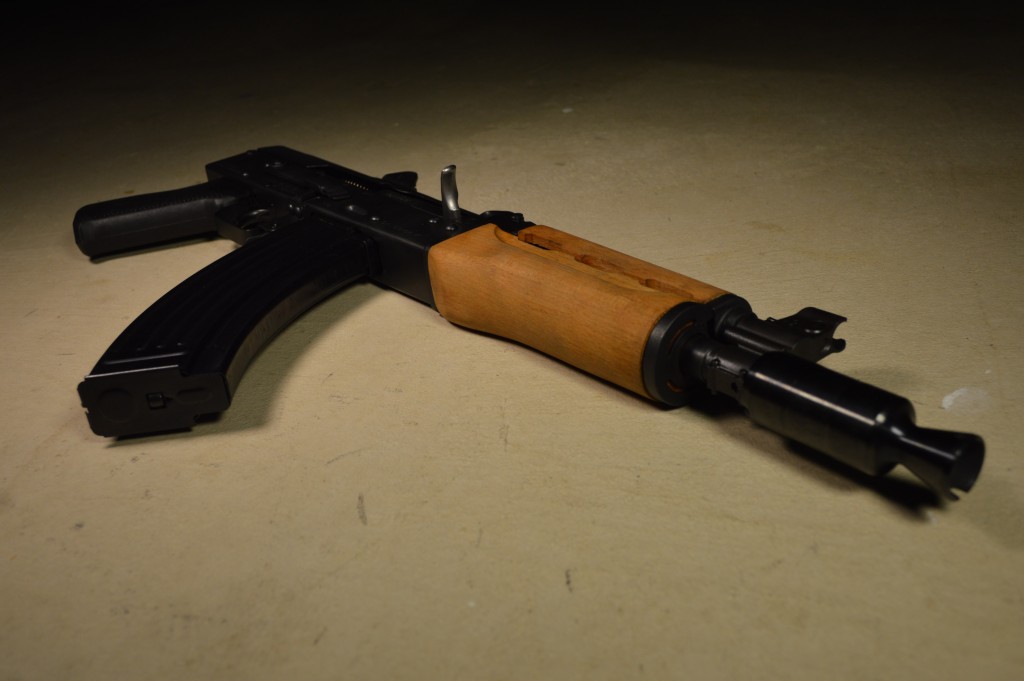
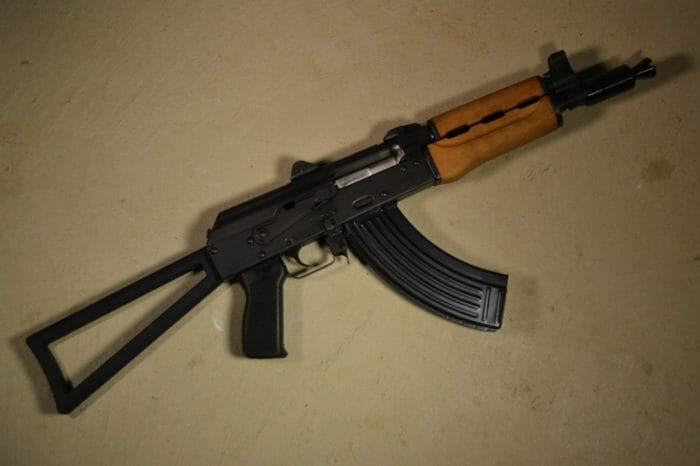
An information security professional by day and gun blogger by night, Nathan started his firearms journey at 16 years old as a collector of C&R rifles. These days, you’re likely to find him shooting something a bit more modern – and usually equipped with a suppressor – but his passion for firearms with military heritage has never waned. Over the last five years, Nathan has written about a variety of firearms topics, including Second Amendment politics and gun and gear reviews. When he isn’t shooting or writing, Nathan nerds out over computers, 3D printing, and Star Wars.

